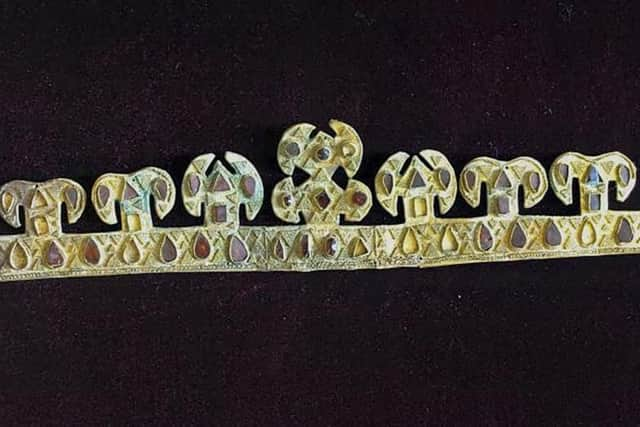Ukraine: 'war crime' claim over looting and destruction of cultural sites
Ukraine’s culture minister Oleksandr Tkachenko alleged that Russian soldiers helped themselves to artefacts in almost 40 Ukrainian museums.
The looting and destruction of cultural sites has caused losses estimated in the hundreds of millions of euros, the minister added.
Advertisement
Hide AdAdvertisement
Hide Ad“The attitude of Russians toward Ukrainian culture heritage is a war crime,” he said.


An exquisite golden tiara, inlaid with precious stones by master craftsmen some 1,500 years ago, was one of the world’s most valuable artefacts from the blood-letting rule of Attila the Hun, who rampaged with horseback warriors deep into Europe in the 5th century.
Workers at the Museum of Local History in Melitopol first tried hiding the Hun diadem and hundreds of other treasures when Russian troops stormed the southern city.
But after weeks of repeated searches, Russian soldiers finally discovered the building’s secret basement where staff had squirrelled away the museum’s most precious objects – including the Hun diadem, according to a museum worker.
The Ukrainians do not know where Russian troops took the haul, which included the tiara and some 1,700 other artefacts.
Dug up from a burial chamber in 1948, the crown is one of just a few Hun crowns worldwide.
Oher treasures that disappeared include 198 pieces of 2,400-year-old gold from the era of the Scythians, nomads who migrated from Central Asia to southern Russia and Ukraine and founded an empire in Crimea.
“These are ancient finds. These are works of art. They are priceless,” said Oleksandr Symonenko, chief researcher at Ukraine’s Institute of Archaeology.
“If culture disappears, it is an irreparable disaster.”
Advertisement
Hide AdAdvertisement
Hide AdRussia’s Culture Ministry did not respond to questions about the Melitopol collection.
Russian forces also looted museums as they laid waste to the Black Sea port of Mariupol, according to Ukrainian officials.
Among the most precious items were ancient religious icons and artworks by painters Arkhip Kuindzhi, who was born in Mariupol, and Crimea-born Ivan Aivazovsky, both famed for their seascapes.
UNESCO has verified damage to84 churches and other religious sites, 37 buildings of historic importance, 37 buildings for cultural activities, 18 monuments, 13 museums and 10 libraries.